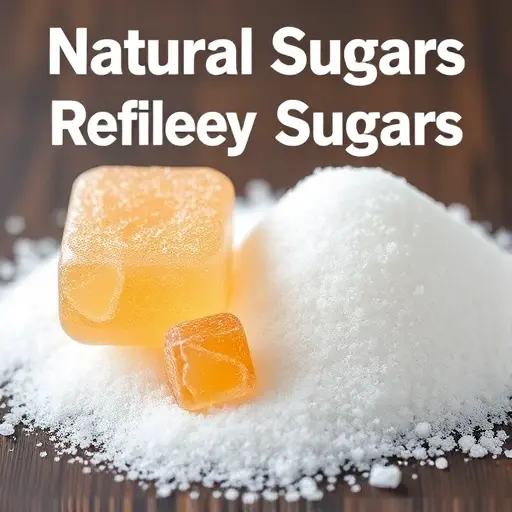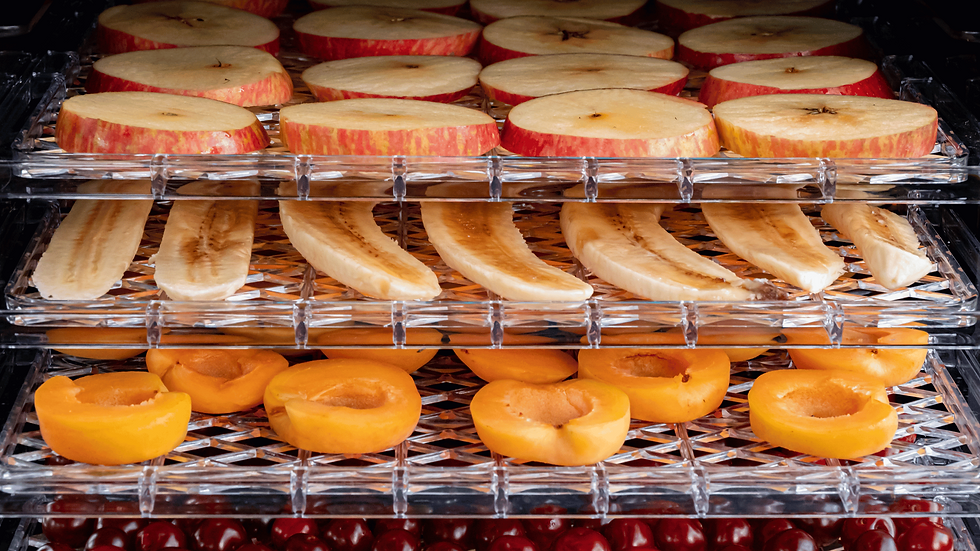Can I Sprinkle Sugar On Fruit Before Dehydrating?
- Walid
- Jul 29
- 6 min read
Benefits of Adding Sweetness to Dried Fruits
When it comes to preserving fruits, adding sugar can significantly enhance the drying process. Sugar on fruit for dehydrating not only intensifies the flavor, but it also helps to retain moisture, ensuring that the dried fruit remains tender and enjoyable. The interplay between sugar and fruit can create a delightful balance that elevates both taste and texture.

Flavor Enhancement
The natural sweetness of sugar complements the inherent flavors of various fruits. By incorporating sugar into the dehydrating process, you enrich the taste profile of the end product. This allows fruits like apricots, peaches, and apples to shine, providing a delicious snack that contrasts nicely with savory dishes or can be enjoyed on their own.
Preservation and Texture
Using sugar when dehydrating fruits also serves as a natural preservative. It can inhibit the growth of bacteria and mold, extending the shelf life of your dried fruits. Furthermore, sugar helps maintain a chewy texture, making the fruit more appealing and enjoyable to eat.
Improved taste and sweetness
Increased shelf life
Better moisture retention
By integrating sugar on fruit for dehydrating, you can create delectable snacks that are not only tasty but also have a longer lifespan. This makes it ideal for meal prep or as a convenient go-to snack.
Fruit Type | Recommended Sugar Amount | Dehydration Time |
Apple | 1 cup | 6-8 hours |
Peach | 3/4 cup | 8-10 hours |
Conclusion
Let’s embrace the art of sugar on fruit for dehydrating, creating delightful and long-lasting snacks. It's worth exploring different types of fruits and the right sugar ratios for the best results.
If you are looking for efficient solar cables, we offer a wide range of durable models for different installation environments.
“Adding sugar not only enhances flavor but also helps in preserving the delightful qualities of dehydrated fruits.”
Explore more insightful articles like this one – we have plenty more for you to discover here!
How to Choose the Right Sugar for Dehydration
When it comes to dehydration, selecting the right sugar on fruit for dehydrating can significantly impact the flavor and texture of your end product. Natural sugars can enhance sweetness and preserve color. Refined sugars, on the other hand, are effective for preservation but may alter the fruit's natural taste. Understanding the various sugar types and their impacts ensures that your dehydrated fruits maintain their appeal.
Natural Sugars vs. Refined Sugars
Natural sugars, such as honey or agave, offer a more wholesome option compared to refined sugars. They can complement the fruit’s intrinsic flavors while retaining nutritional benefits. However, refined sugars like white sugar can provide consistency and longevity to your dehydrated fruits, making them more shelf-stable. It’s crucial to weigh these options based on your final goal for the dried fruits.

How to Apply Sugar for Effective Dehydration
Applying sugar carefully is key. You can sprinkle or soak fruits in a sugar solution before dehydration. This method allows for an even coating, enhancing both flavor and preservation. Adjusting the sugar concentration is also critical to achieving just the right sweetness.
Consider using honey for an earthy note.
Sugar syrups can help ensure even coverage.
Experiment with combinations for unique flavors.
In Summary
Ultimately, the choice of sugar is pivotal when it comes to dehydrating fruit. Incorporating sugar can help enhance flavor while ensuring your homemade treats are enjoyable.
Test different sugars to find your favorite.
Don't hesitate to mix sugars for unique tastes.
"The right sugar on fruit for dehydrating not only preserves but elevates the entire experience!"
Step-by-Step Guide to Sugar Coating Fruit
Sugar on fruit for dehydrating not only enhances flavor but also acts as a preservative, making it a fantastic choice for snacks. If you’re looking to elevate your fruit game, this simple sugar coating technique is ideal. Follow along as we walk you through each step to create deliciously sweet, coated fruit that's perfect for snacking or culinary use.
Here is our full list of products.
Preparing Your Fruit
Start by selecting your choice of fruit. Popular options include apples, strawberries, and pears. Thoroughly wash and dry the fruit before cutting it into manageable pieces. This preparation ensures that the sugar adheres better to the fruit surfaces, giving you the best results in sugar coating and subsequent dehydrating.
Making the Sugar Coating
Prepare a sugar mixture by combining granulated sugar with a hint of lemon juice or water to create a syrup. This syrup should be thick but spreadable. Once mixed, dip each piece of fruit into the syrup, making sure to coat them evenly. This adds an enticing sugary layer that will caramelize during the dehydration process.
Choose fresh, ripe fruit.
Wash and dry thoroughly.
Prepare a sugar syrup.
Coat fruit evenly.
After coating your fruit, spread it out on a dehydrator tray, ensuring enough space for air circulation. This spacing is essential for the best dehydration results.
Fruit Type | Dehydration Time |
Apples | 6-10 hours |
Strawberries | 5-8 hours |
Pears | 7-12 hours |
Enjoying Your Sugar-Coated Fruit
Once your sugar-coated fruit is fully dehydrated, it will become a delightful treat packed with flavor. The careful balance of sugar on fruit for dehydrating creates a sweet, chewy snack that can be enjoyed at any time of the year.
Snack on the fruit directly.
Add to trail mix.
Use in baking recipes.
“Sugar on fruit for dehydrating transforms ordinary into extraordinary—try it today!”
Common Mistakes When Using Sugar on Fruit
When it comes to using sugar on fruit for dehydrating, common mistakes can lead to disappointing results. It's crucial to understand the right techniques to enhance flavors without overwhelming the natural sweetness of the fruit. Many people assume that more sugar equates to a better taste, which is often not the case. Over-sweetening can mask the unique flavors of the fruit and make the final product too sticky or cloying.

Over-Sweetening
Adding excessive sugar diminishes the fruit's natural taste. Instead, use just enough sugar to complement the fruit's flavors while still allowing its innate sweetness to shine through. Moderation is key when you're sugar on fruit for dehydrating. You want the balance to highlight the essence of the fruit rather than subdue it.
Ignoring Fruit Preparation
Properly preparing your fruit is essential. Be sure to wash and slice your fruit into uniform pieces to ensure even dehydration. If the fruit is unevenly sliced, some pieces may become over-dried while others remain chewy. This inconsistency can affect the quality and taste of your dehydrated snacks.
Wash fruit thoroughly before sugaring.
Use even slices for consistent drying.
Consider sugar alternatives for a healthier option.
Fruit Type | Recommended Sugar Amount |
Apples | 1/4 cup |
Pineapples | 1/3 cup |
Choosing the Right Sugar
Not all sugars function the same way in the dehydration process. Granulated sugar works well, but exploring options like honey or agave syrup can add unique flavors. Experimenting with different sugars can yield delightful surprises.
Granulated sugar for classic sweetness.
Honey for a floral note.
Agave for a lower glycemic option.
“A little sugar goes a long way when enhancing the flavors of dehydrated fruit.”
Delicious Recipes with Sugar-Covered Dehydrated Fruits
When it comes to delicious snacks, sugar on fruit for dehydrating transforms ordinary fruits into delightful treats. Whether you’re looking to satisfy your sweet tooth or preserve your harvest, sugar-covered dehydrated fruits are a fantastic option. These sweet morsels can serve as toppings for desserts, ingredients in trail mixes, or wholesome snacks on their own.
Fruit Selection
Choosing the right fruit is key for successful dehydration. Some popular options include apples, strawberries, and peaches. Each fruit offers unique flavors that enhance when combined with sugar. It’s essential to wash and slice your chosen fruits uniformly to ensure even drying, allowing you to achieve the best taste and texture.
Preparation Techniques
The process of applying sugar to fruit is simple yet effective. Begin by tossing your sliced fruits in a bowl of sugar, allowing them to coat evenly. You can adjust the sugar quantity based on your sweetness preference. Bake or use a dehydrator at a low temperature to dry the fruits for several hours or until they reach the desired chewiness.
Apples with cinnamon sugar
Strawberries in vanilla sugar
Peaches with a hint of lemon
These combinations elevate your dehydrated fruits, making them irresistible. Check out the following table for approximate drying times and temperatures for different fruits.
Fruit | Temperature (°F) | Drying Time (Hours) |
Apples | 135 | 6-8 |
Strawberries | 135 | 6-10 |
Peaches | 135 | 8-12 |
Storage Tips
Once your sugar-covered dehydrated fruits are ready, proper storage is crucial to maintain their flavor and texture. Store them in airtight containers in a cool, dark place. For long-term storage, consider vacuum sealing to prevent moisture and daylight exposure.
Use airtight containers
Label your storage for easy identification
Avoid humidity
“Using sugar on fruit for dehydrating elevates everyday snacks into gourmet delights. Give it a try!”




Comments